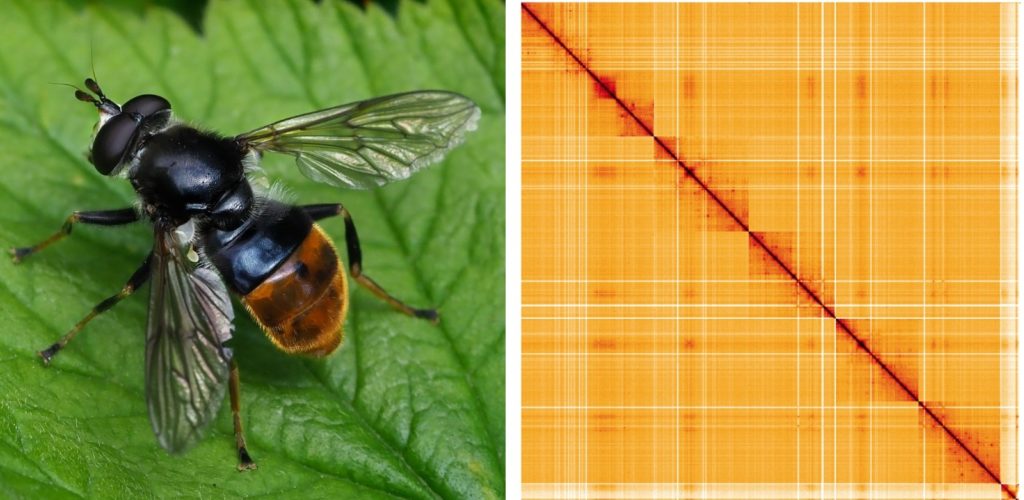
Pine Hoverfly back from the brink in Britain with help of new genomes
In summer 2022, for the first time in almost a decade, an incredibly rare insect was spotted flying through the forests of the Cairngorms. More excitement came in the autumn, when its larvae – known unflatteringly by some as ‘rat-tailed maggots’ – were discovered thriving in waterlogged tree stumps. These artificial habitats were built by conservationists trying to save the Pine Hoverfly from extinction in Britain and the larvae discovered inside were the result of a large-scale conservation breeding and release effort.
“Seeing the flying adults after so long was massive,” says Dr Helen Taylor, Conservation Programme Manager at the Royal Zoological Society of Scotland (RZSS). “But the really key point for us was going back in autumn and finding larvae that we could prove were the offspring of hoverflies we had released.”
However, Helen and the team are not in full celebration mode yet. Earlier attempts to reintroduce Blera fallax to its native Scottish range also saw initial success, before the wild population quickly disappeared again. “Until we’ve got two or three years of successful breeding in the wild under our belt, we’re not going to relax. And even if these populations are successful the next step is to put the species in more places.”
Part of ensuring that success involves careful genomic studies of the conservation breeding population. This was next to impossible until recently, when a new high-quality reference genome for the species was released by the Darwin Tree of Life project.
“The questions we’re answering right now are the really basic ones, because we only had very limited genetic data on this species until this point,” explains Dr Heather Ritchie-Parker, Research Scientist for RZSS WildGenes. “So we’re doing a lot of really important baseline work which can help make impactful conservation decisions. It makes such a change to be working on an invertebrate species with a reference genome. It’s very exciting!”

Pine Hoverfly
Blera fallax
| Range | Scattered across northern Eurasia, but in Britain (until recently) only found in a small patch of private woodland in the Cairngorms. |
| Habitat | Mature, complex, old-growth pine woodland. Females lay eggs in ‘rot holes’ caused by heart-rot fungus. Rainwater collects in the holes, creating a ‘bacterial soup’ on which the larvae feed. |
| Life cycle | Adults emerge from pupae in May-July and live for six weeks, mating and laying eggs. Larvae live in rot holes for 9 months, pupating in March-April. |
| Ecosystem importance | Adults are pollinators, especially of Rowan (Sorbus aucuparia). Larvae help recycle waste in the forest. |
| Conservation status | Critically Endangered in the UK Red Data Book. Arguably Britain’s rarest insect – as rare as the more famous Wild Cat (Felis silvestris). |
| Reasons for conservation threat | Land change and habitat loss, compounded by its very specific habitat requirements. |
The campaign to stop the Pine Hoverfly disappearing from Scotland has drawn in a host of passionate partner organisations under the Rare Invertebrates in the Cairngorms partnership: the RSPB, the Cairngorms National Park Authority, Buglife Scotland, Butterfly Conservation Scotland, and NatureScot, as well as the Malloch Society and Forestry and Land Scotland. Some help restore the hoverflies’ very specific habitat. Others search the woods for signs of breeding success, “cold work in September and October” confirms Helen from her time exploring countless water-logged, debris-filled rot holes.
Back at the Highland Wildlife Park, the work of the conservation breeding team is sheltered from the elements but no less painstaking. The programme took an initial group of 25 larvae in 2018 and is now releasing around 6,000 larvae into the wild every year, keeping 300 back for the next season’s captive breeding.
But while the programme’s individual hoverfly numbers are booming, the genetic prospects of this new population are less certain. That is where genomics comes in. DToL’s new reference genome will help answer three important questions, and hopefully prevent the new Pine Hoverfly populations collapsing.
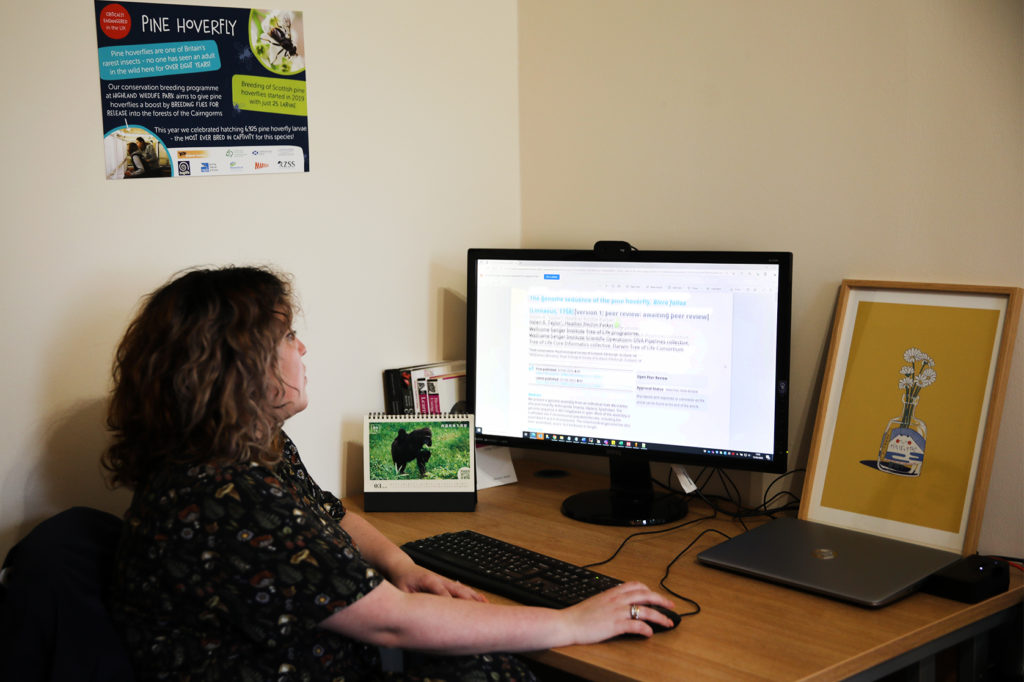
Healthy hoverflies?
“We know that the conservation breeding population was founded by a maximum of two females, and therefore we constantly worry about inbreeding. We try to do as much outbreeding as possible. But with two female founders there are only so many options,” says Helen.
At the very least, the team wants to make sure the breeding population is not losing genetic diversity. Heather does this through genome resequencing of individual hoverflies, a process made possible by the existence of DToL’s reference genome. She compares the genomic data of the founding individuals (now long since departed) to representatives of each new generation.
“We are looking at the diversity through each cohort to see if it maintains the levels of diversity we had in the founding population,” explains Heather. “And that would help inform who should breed with who.”
The team fondly remember one hoverfly, ‘Female No. 3’, who was “extremely successful” in her task of breeding the next generation. As a result, her genetic material became overrepresented in the population as a whole – something Heather can now keep checks on.
The breeding operation has become increasingly sophisticated with each generation. All individuals are now colour-marked with insect-friendly paint pens. Males and females are kept in pairs to breed, being returned to single-sex ‘bachelor’ and ‘hen’ cages at all other times. It would theoretically be possible for the team to produce a pedigree for each hoverfly in the programme.
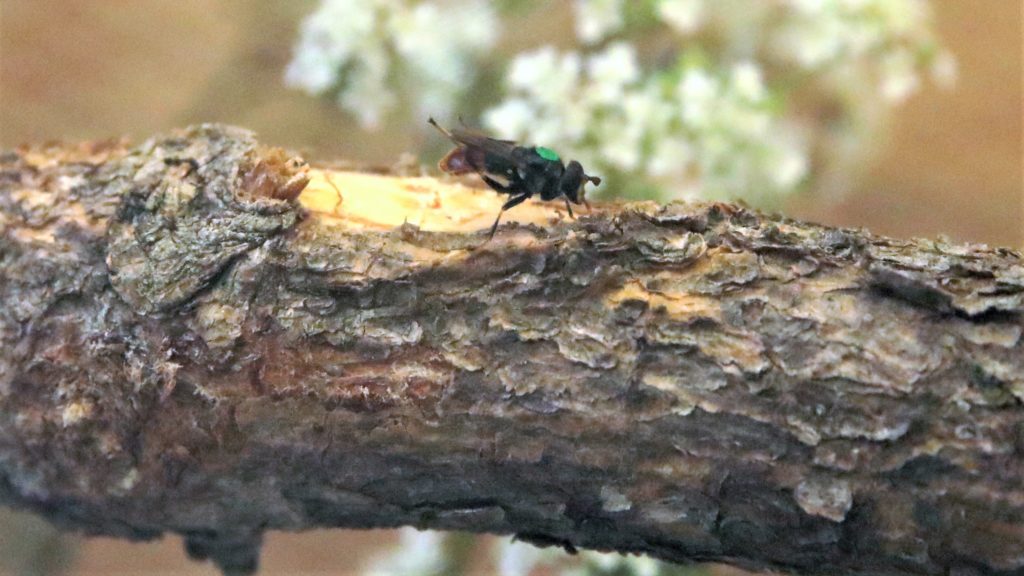
Born to be wild?
The team wants to know whether the genetic diversity in the populations they are reintroducing is anywhere near what you would expect in a healthy wild population.
“We expect that the genetic diversity in the wild pine hoverfly population in Scotland at the moment is way lower than it would have been when there were more Pine Hoverflies. So using that as a baseline is not particularly helpful,” says Helen.
However, Pine Hoverflies do not only live in Scotland. Populations in Scandinavia are much larger and connected across bigger ranges. These should be a useful basis for what wild populations – which have not suffered hugely diminished numbers – should look like genetically.
“It might be that (Scandinavian) genetic diversity is massive compared to what we’ve got in Scotland,” says Heather. “And that’s where there has to be a conversation about whether the population here, based on a small number of founders, is ever going to be successful in the long term, rather than us having to continuously release them? As much as we love these flies, we don’t want to have to do that forever.”
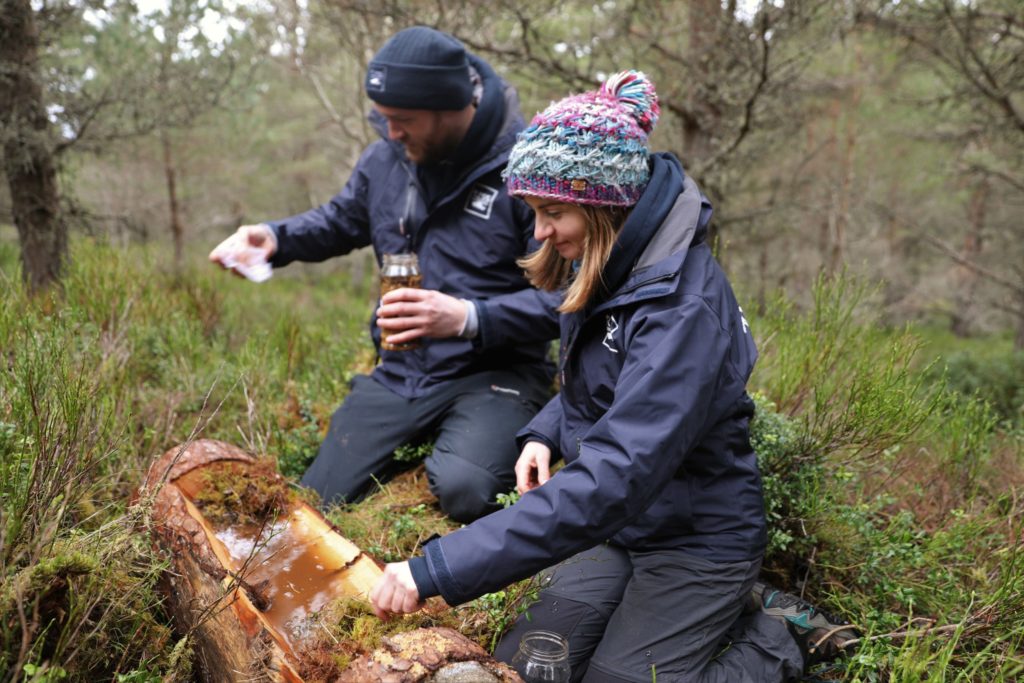
Foreign flies?
If the answers to the first two questions come back negative, a backup plan has already been floated. Hoverflies taken from larger populations abroad – for example in Sweden or Finland – could be brought in to kickstart a British recovery. But such reintroductions are tricky. “Understanding how genetically differentiated they are would be really helpful,” says Helen.
Unlike other introduced species, the experts aren’t worried that Scandinavian hoverflies would upset Scotland’s ecological balance. Rather, the concern is that imported individuals would struggle in Scotland, meaning serious wasted effort for the conservationists and a poor outcome for the species.
For example, Swedish hoverflies can use spruce trees for their breeding habitat – something their Scottish cousins have never been observed to do. The amount of freezing and thawing that the Scandinavian hoverflies have adapted to could also be incompatible for the Scottish climate.
“Having a (reference) genome means we can look at marked differences in actual genes,” explains Heather. “This might be the case for habitat adaptation, or it might not. We don’t know whether this is a learned behaviour or has a genetic basis. We’re looking for any red flags in the genetic data that suggests bringing them over from Scandinavia would be a bad idea.”
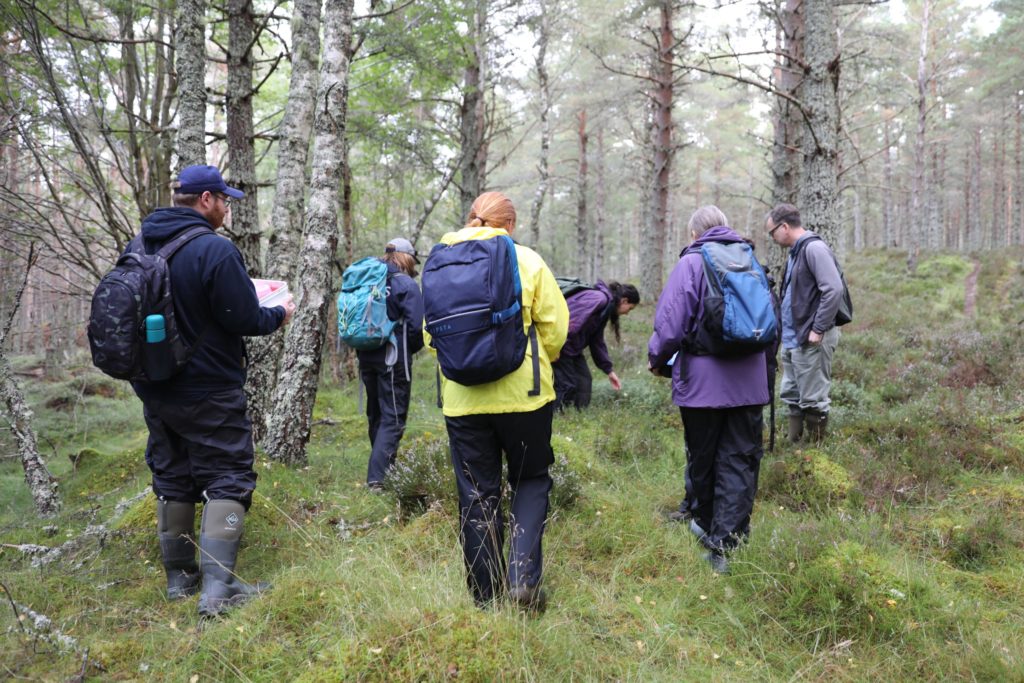
Genomics alone will not cement the Pine Hoverfly’s return to Scottish forests. At every stage of this years-long conservation effort the multi-disciplined team has drawn on a wide range of ecological and behavioural data and expertise. Nevertheless, being able to probe the genetic makeup of these rare insects thanks to a high-quality reference genome is a potential gamechanger. And that applies to many insect species.
“For so many invertebrates the genomic data is just missing,” says Helen. “Darwin Tree of Life is sequencing the genomes of so many species that haven’t been studied before because those resources haven’t been there. Even if this work isn’t happening tomorrow, if someone studies a species in five or ten years and wants to know what the genome looks like, it is going to be there. For conservation projects like ours, the importance of that cannot be overstated.”
